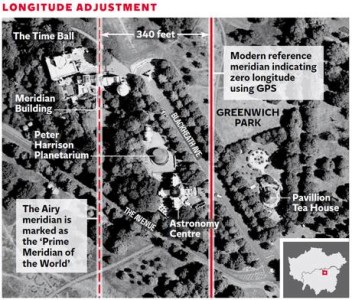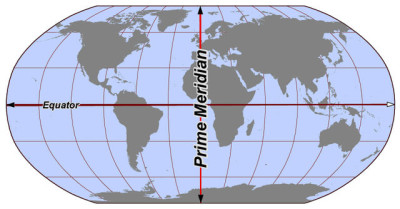The Prime Meridian, as I am certain most of you probably know is located in the United Kingdom at the Greenwich Royal Observatory in Greenwich, England. This line represents the zero value on the longitude scale and separates the eastern and western hemispheres on the globes. It was set based on a vote which included 25 nations in 1884 and basically standardized mapping, set time zones and has been invaluable for any other number of important things. It’s a pretty big deal.
If you visit the Greenwich Royal Observatory, you’ll see a big fancy metal line set in the ground to represent the divide and millions of tourists every year take photos at the location, with one foot on either side of the world.
But there’s a problem. That line isn’t actually the Prime Meridian.
In fact, according to modern GPS technology, the Prime Meridian is actually about 100 meters (328 feet) to the east. This is by no means a new discrepancy or discovery, but researchers at the US Naval Observatory and the National Goespacial-Intelligence Agency recently published a paper in the Journal of Geodesy that finally explains the discrepancy that has had GPS enthusiasts scratching their heads for years.

image from the Independent
When the original Prime Meridian was calculated, precise GPS technology was not available and scientists instead used a “clock star” and a telescope to calculate the line. However, scientists believe that the local terrain and the shape of the Earth caused local distortions of gravity, causing the line to be just a smidgen off. GPS satellites, of course, aren’t subject to this distortion.
Of course, because all of the GPS satellites still calculate the exact same meridian this really effects neither navigation nor clocks and is rather just an interesting cartography footnote. If you are interested in learning more about the prime meridian and the discrepancy, then I highly recommend this article from the Independent, which explains things a little better.
I don’t know about you, but this makes me want to go visit the prime meridian even more now.

